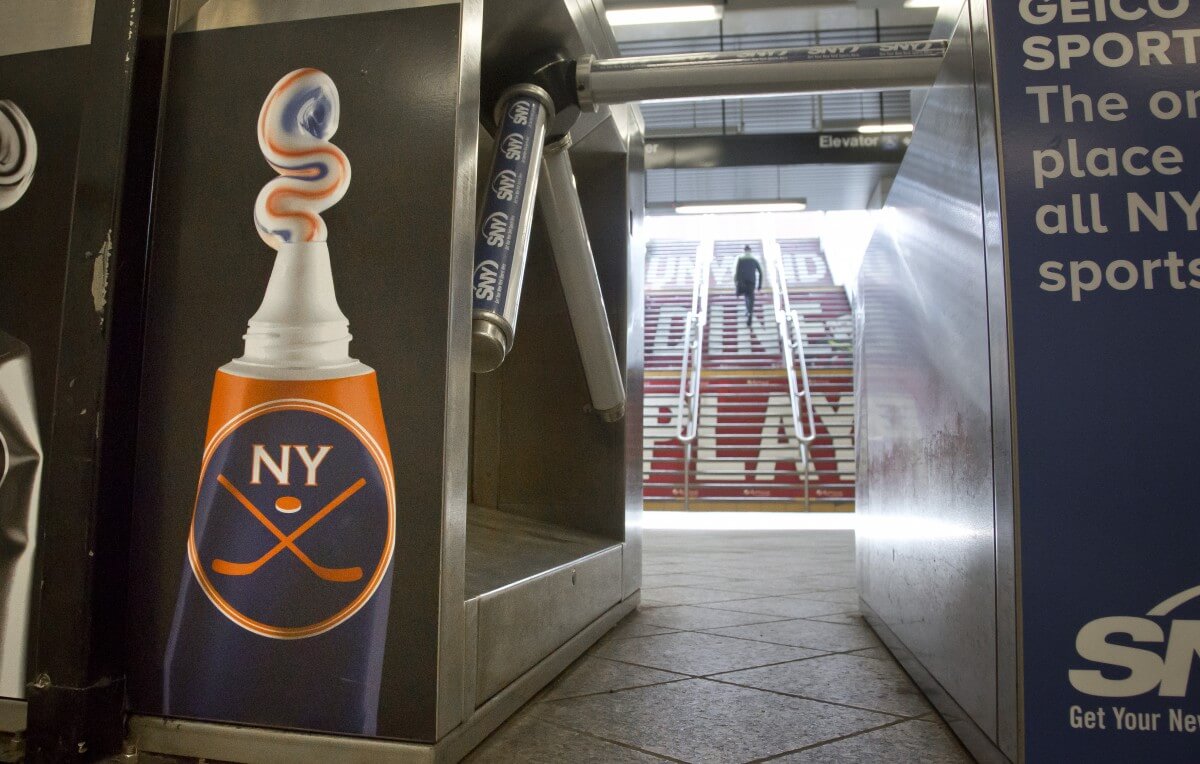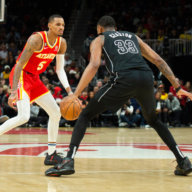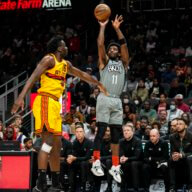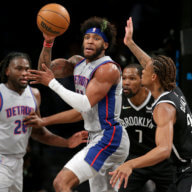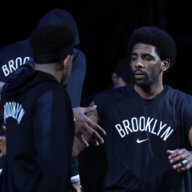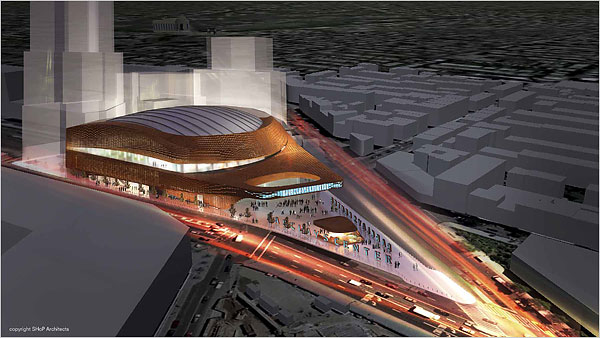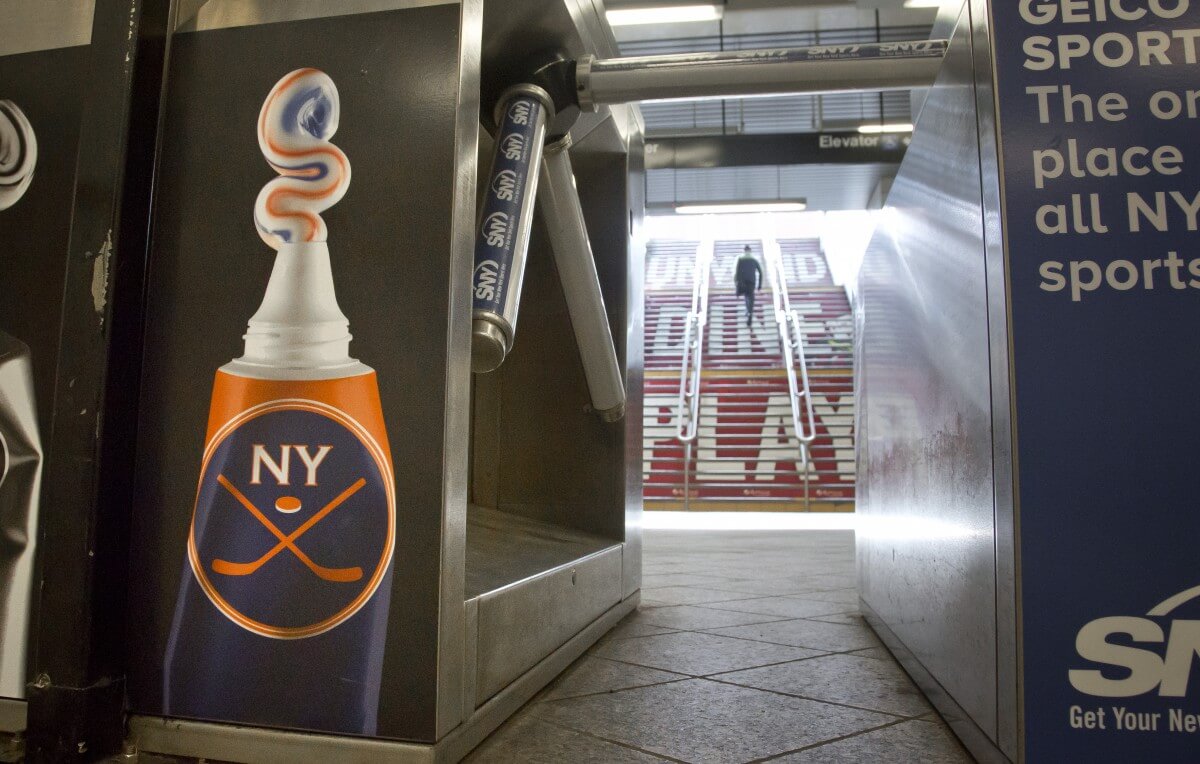
Barclays Center debuted the New York Islanders last Friday, in a 3-2 overtime loss to the Chicago Blackhawks. But there was one glaring issue with the game, and not just that Islanders fans booed Brooklyn Nets players: the arena has some highly obstructed seats behind one goal.
According to Barclays Center’s seating chart, limited view seats span both the lower and upper sections behind the “defend” goal. That affects lower bowl seating (sections 1 through 4 and 28 through 31), 100-level (sections 102, 104, and 105) and 200-level (sections 201 through 205 and 227 through 231). That’s 19 sections in total with obstructed views.
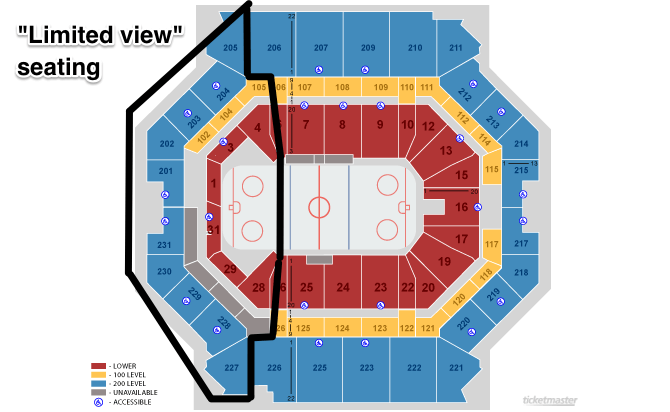
Here’s some examples from fans and reporters on Twitter of the obstruction, which blocks anything from a corner to the goal itself:
Jets vs Islanders at Barclays Center. #Brooklyn
@nhl @mattlundy33 @sirtmoneyesq @SeteveWalker pic.twitter.com/VMh7M0XcAK
— James Kot (@JamesKot) October 12, 2015
A bit obstructed at Barclays. Hope nothing happens in that corner. #nhl #islanders pic.twitter.com/Iz8V2Fq3kQ
— Igor Z (@IZaslavsky) October 12, 2015
Islanders get 1st Brooklyn goal by Taveras & missed it because I was checking out obstructed-view seats. Crowd loud! pic.twitter.com/ITu2GHANTu
— Rich Calder (@Rich_Calder) October 10, 2015
Those tickets come at a discount compared to other sections, but they can still get pricy. For big-ticket games like Islanders-Rangers, the cheapest seats start at $165 even in “limited view” sections, and go up to $325 per seat in the lower “limited view” sections. On the cheapest nights, “limited view” seating ranges from $20 to $50 per seat. The secondary market, as you might guess, ticks a little higher.
Long before the arena ever broke ground, Barclays Center’s original plans called for space to comfortably fit a hockey arena. But famed architect Frank Gehry’s design was dropped in 2009, when developer and majority owner of Barclays Center Bruce Ratner needed to scale back the design and meet a deadline for use of tax-exempt financing. The final design was a smaller arena, suited for basketball but not for hockey.
That’s how Barclays Center ended up with obstructed seats, a jumbotron seated well off-center and a seating capacity of just 15,813, the second-smallest of all NHL arenas and smaller than Uniondale’s Nassau Coliseum, where the Islanders played prior to this season.
Note: this article originally reported Barclays Center was the smallest NHL arena by capacity. It is actually the second-smallest arena. The error has been fixed.

